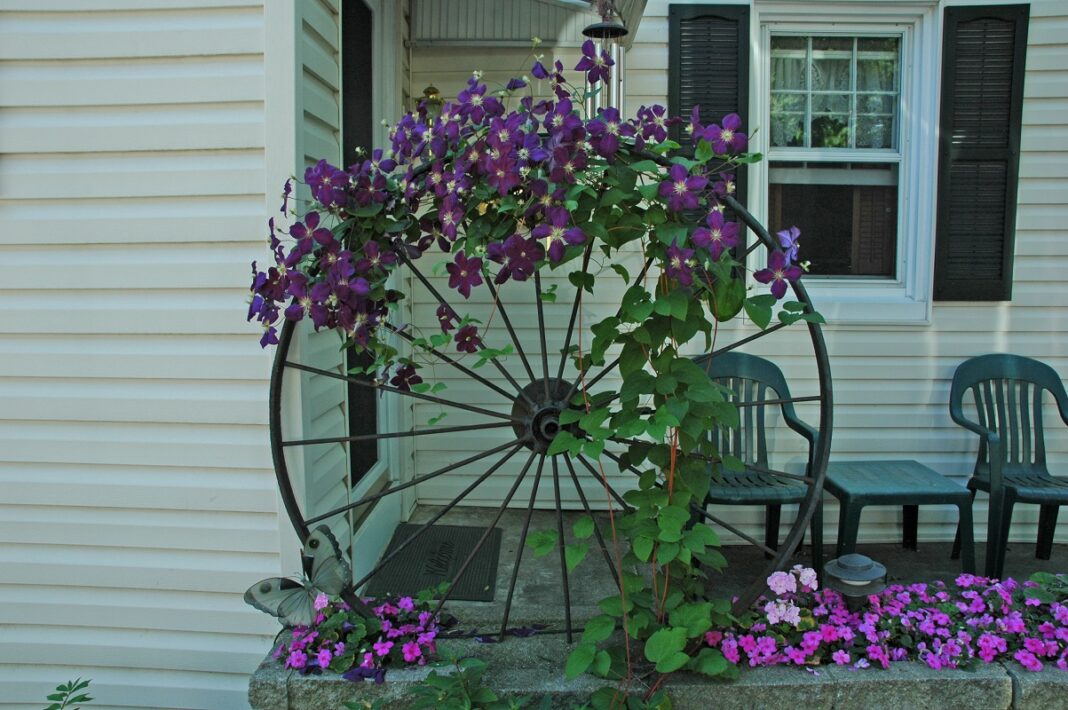Expand your planting space, grow a living screen, or add vertical interest to your garden beds. Train vines up decorative support onto a fence or allow them to climb a trellis set in front of a wall or structure.
Pole beans, peas, Malabar spinach, cucumbers, melons, and squash are all edible candidates for growing vertically. Training these vegetables up support saves space in the garden. Plus, the increase in light and airflow through vertically trained plants helps reduce the risk of mildew and other diseases.
Growing vertically can also increase your yields and make harvesting much easier. Pole beans typically produce extra picking, plus they require less bending to harvest. If harvesting is easy, you are more likely to pick regularly, increasing productivity and ensuring the best flavor. Try scarlet runner beans or purple podded pole beans for added color.
Train Malabar climbing spinach up an obelisk in a container or over a decorative trellis in the garden. Use the leaves the same way you use true spinach. The buttery nutty flavor is great fresh, added to a salad, used as a sandwich wrap, stir-fried, or steamed. The red stems, flowers, and seeds make an attractive display in the vegetable or ornamental garden.
When growing vertically, support the heavy fruit of melons and squash by creating a sling from cloth strips, an old T-shirt, or macramé —yes, it’s back! Tie the sling to the trellis to cradle the large fruit. The sling handles the weight, preventing the heavy fruit from ripping the plant off the support and damaging the plant. Elevating the fruit also reduces loss to soil-dwelling insects and disease.
Use decorative supports to add a bit of beauty or help blend edibles into ornamental plantings. Upcycling found items into creative supports can save money and add some personality. A section of an old iron fence, headboard, golf clubs, or farm implements can add a bit of functional whimsy to your garden.
Add color to a plain fence or wall with annual and perennial flowering vines. Use support and leave space between wooden fences and siding to reduce moisture buildup that could damage these structures. If the vines can easily be moved away from the structure, this also makes it easier to manage future repairs and painting.
Double up your plants to increase the floral impact. Use annual vines to provide quick cover for the first few years while establishing perennial vines onto the support. Consider mixing two vines on one support if space allows. Select vines that bloom at the same time to create interesting combinations. Or plant two vines that bloom at different times to extend the floral display.
Always select supports strong enough to support the plants you are growing. Make sure the support provides the structure needed for the vines to climb. Those with twining stems and petioles need something to grab onto while those with root-like holdfasts or suction cups need a rough surface for attaching. Ensure the vines adhering to the surface will not damage the structure. Other vines may need their stems to be tied to the support.
As you can see, the possibilities are endless. Start gathering decorative supports, look for spaces that need a bit of vertical interest, and select vines suited to your growing conditions and landscape design.






